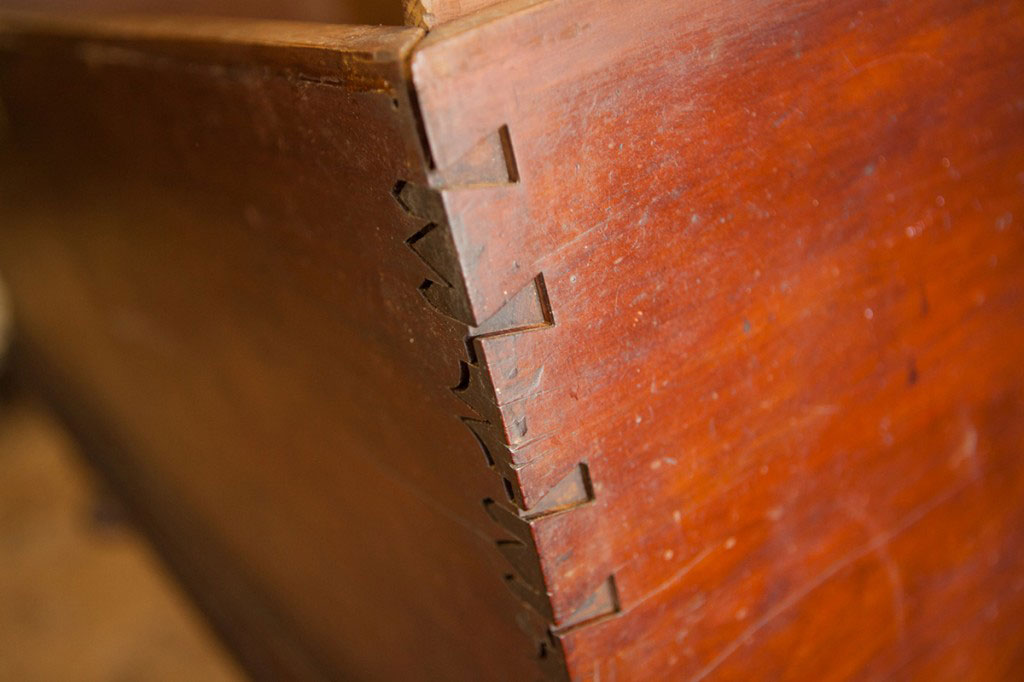As craftsmen we are passionate about keeping traditional artistry alive, especially when it comes to restoring an antique. That is why one of our most beloved divisions is our Antiques Restoration and Reproduction division. Bermuda has a rich culture of furniture, and many of us have pieces that have been passed down from generation to generation.
One way of determining the quality of your antique piece is by examining the type of joinery deployed. If you discover that a dresser or trunk is constructed using a dovetail joint as opposed to rabbet joint, you can be certain it’s a higher quality piece of furniture.
Dovetail joints often hold two boards together in a box or drawer, almost like interlocking the fingertips of your hands. As the dovetail joint evolved throughout history (it is said to pre-date written history), it became a clue for the age and authenticity of antique furniture. The type of dovetailed joint, especially in drawers, reveals much about furniture construction and dating.
The dovetail is a strong woodworking joint and great for tensile strength (resistance from pulling apart). A series of pins cut to extend from the end of one board interlock with a series of tails cut into the end of another board. The pins and tails have a trapezoidal shape. Once glued, the joint is permanent, and requires no mechanical fasteners.

This type of joint is used in box constructions such as drawers, jewelry boxes, cabinets and other pieces of furniture where strength is required. It is a difficult joint to make manually, requiring skilled workmanship, however it is more than worth it. Once dovetail joints were able to be machine-cut, they became the standard for quality American furniture.
The name “dovetail” comes from the appearance of the joint, resembling the triangle shape of a bird’s tail. The earliest examples are from furniture placed with mummies in Egypt thousands of years ago, and also in the burials of ancient Chinese emperors.
We at BS&R enjoy restoring or reproducing these treasures in our Antiques Division, and repair these pieces in the same way they were constructed.
